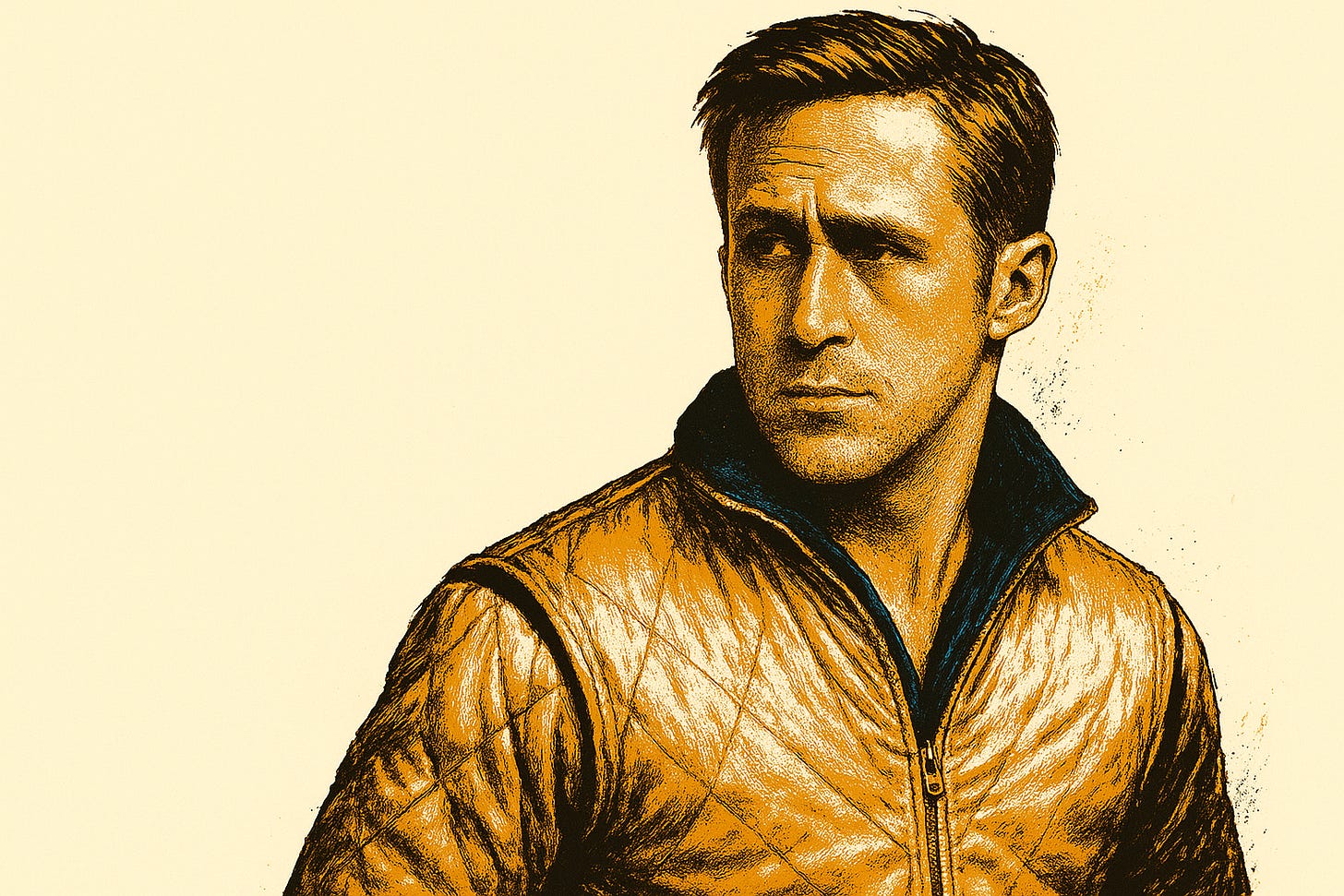The Silent Bob: When Silence Changes Everything
I don’t need to talk to you. I just need to be there when no one else is.
Some films arrive with a bang. Others slip quietly into your life. Drive was one of the latter. I found it on one of those long, restless nights when you’re not expecting much. I was living alone, in my brother’s apartment, after a breakup that had left me a little unmoored. My routine: one or two movies every night, for more than two years. Most came and went without leaving a trace. But Drive... that one stayed.
Ryan Gosling’s character doesn’t even have a name. He’s the driver. Period. You don’t know who he is, where he comes from, or what he really wants. But you understand every glance, every gesture. He didn’t need to speak.
And at that time, I couldn’t either.
Ryan Gosling isn’t playing a classic hero. Not even a one-liner-wielding antihero. He’s walking silence. A presence that needs no explanation—because you already carry the weight of it yourself.
Some silences kill.
And in mythology, some characters knew how to wield that silence as a weapon.
Take Melampus, a seer who didn’t need to speak to humans—he already understood animals. He would spend days in complete silence, just to hear better. That silence was where his gift lived. Just like the Driver, who listens to the world with the lights off and fists clenched.
Or Víðarr, a Norse god who never utters a single word throughout all mythology. He lives in silence until Ragnarok, when he kills Fenrir—the wolf who devours Odin. No speeches, no promises. He was just waiting for his moment.
In real history, there are silences that liberate.
Harriet Tubman never needed grand speeches. She freed hundreds of slaves, traveling by night, in silence, with clear purpose and steel resolve.
Then there's Shunryu Suzuki, a Zen master. His talks were minimal, but his presence was the teaching. He didn’t speak—he showed.
What makes a Silent Bob?
• Speaks only when absolutely necessary
• Changes the tone of any scene just by being in it
• Controls emotion with surgical precision
• Protects quietly, without asking for thanks
• Carries an unspoken past that weighs heavy
• Acts with calculated violence when needed
• Finds comfort in solitude
Five Types of Silent Bob (and Where to Watch Them)
• The Silent Bodyguard – Chirrut Îmwe in Rogue One
Quiet, unwavering, always present when it counts.
• The Traumatised Lone Wolf – Logan in Logan
Wounded, worn out, but still able to fight for what matters.
• The Impassive Observer – The Gimp in Pulp Fiction
Barely moves, yet radiates discomfort. Silence as menace.
• The Stoic Saint – Wink in Beasts of the Southern Wild
A moral compass who doesn’t preach—just shows the way.
• The Mute Avenger – The Bride in Kill Bill Vol. 1
Fury bound in a silence so sharp it cuts.
When the Silent Bob walks into a scene, everything shifts. In Drive, the story isn’t told through his words—it’s told through what he provokes.
The tenderness with Irene.
The fear in his enemies.
The unease in those who can’t decipher his stillness.
His silence is what makes him powerful. We don’t know what he’ll do—but we sense it will be final.
And when he acts, he changes everything.
No speeches.
No explanation.
Just presence.
And you… what are you holding back?
Some people don’t talk much.
They speak through what they do.
Do you have something inside you that you haven’t found words for?
Do you recognize yourself in this type of character?
Or maybe, like it happened to me, you once saw a Silent Bob on screen…
and saw yourself.







